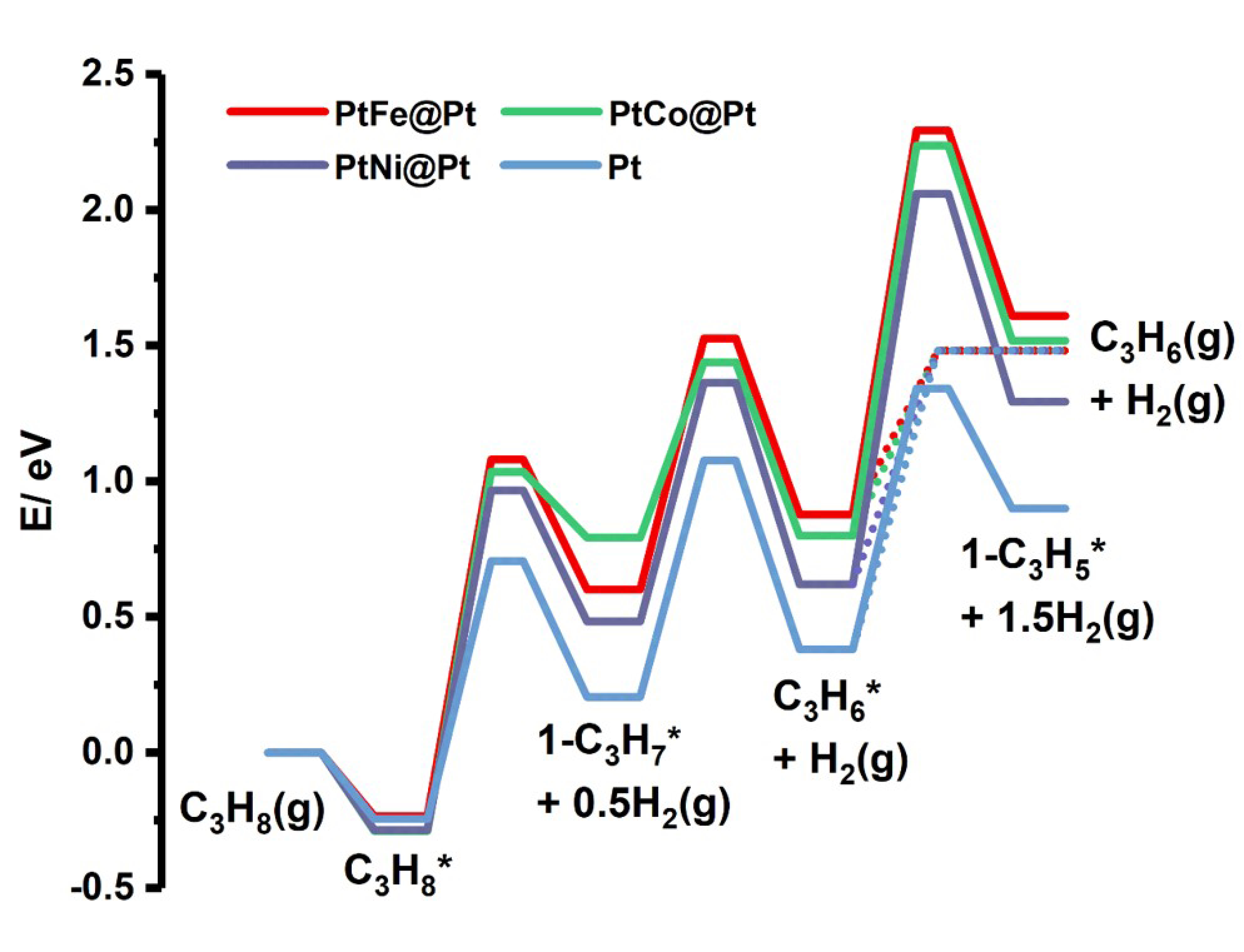Progress in heterogeneous catalysis is often hampered by the difficulties of constructing active architecture and understanding reaction mechanism at molecular level due to the structural complexity of practical catalysts, in particular for multicomponent catalysts. Although surface science experiment and theoretical simulation help understand the detailed reaction mechanisms over model systems, the direct study of the nature of nanoparticle catalysts remains grand challenge. This paper describes a facile construction of well-defined Pt skin catalysts modified by different 3d transition metal (3dTM) atoms in subsurface regions. However, on the catalyst, containing both surface and subsurface 3dTMs, the selectivity of propane dehydrogenation decreases in the sequences of Pt ~ PtFe > PtCo > PtNi, due to the easier C-C cracking on exposed Co and Ni sites. After the exposed 3dTMs were removed completely, the C
3
H
6
selectivity was found to increase dramatically, in the row Pt < PtNi@Pt < PtCo@Pt < PtFe@Pt, which is in line with the calculated trend of d-band center shifting. The established relationship between reactivity and d-band center shifting clearly illustrates the role of subsurface catalysis in dehydrogenation reaction. Read more in our recent publication:
Subsurface Catalysis-mediated Selectivity of Dehydrogenation Reaction
Sci. Adv. 2018, DOI: 10.1126/sciadv.aar5418

